Galapagos Islands
These mostly desert islands, (1000km) west of Ecuador, were officially discovered in 1535. Galapagao is Spanish for Giant Tortoise. The islands were eulogised for all time in 1835 when the young Charles Darwin recorded his naturalistic observations over a five week visit. Although the naturalist only visited 4 of the 33 named islands and 26 emerging rocks, which comprise the Galapagos group, his observations about the science of the intricacies of the Galapagos finches, and countless other facts (including some theories of Alfred Wallace) eventually grew into, On the Origin of Species by Means of Natural Selection, some 24 years later, in 1859. Galapagos received UNESCO World Heritage status in 1978. Only 4 of the major islands are inhabited, with a population of over 25,000, when the last census took place in 2010. There were no indigenous islanders in 1535.
The Galapagos archipelago is one of the largest and most active groups of oceanic volcanoes in the world, affording geologists and evolutionary scientists unique opportunities to study both evolving and extinct species. The evolving include the flightless cormorant and blood sucking finches on Wolf Island, whilst the mockingbird once found on all Galapagos islands is now extinct on Floreana (Charles) Island and Lonesome George the 100 year old giant tortoise died this year (2012), the last of his species of Pinta Island tortoise.
With respect to endemic species on Galapagos, 14 endemic races of tortoise, distinct and sub specific have evolved on 11 islands. Indeed on Isabella (Albemarle) Island alone, 5 races of tortoise were distinguished, one for each volcano. It is quite likely that these 5 volcanoes had been separate islands in the past. Only 2 island groups exist in the world today that have Giant Tortoises, Galapagos and Aldabra in the Seychelles group. Land iguanas evolved on the central islands and one distinct species is found on Santa Fe (Beagle) Island. There are 5 species of lava lizard. Four species of mockingbird inhabit all the islands except on Floreana. Of all the reptiles, which made the Galapagos famous, like the Giant tortoise, most are related to South American forms of iguanas, lava lizards, geckos, and snakes. Of the 27 reptiles found on Galapagos 17 or 63% are endemic. As regards the second most iconic Galapagos creature after the giant tortoise, the marine Iguana, there is one endemic genus with one species and seven sub species. Conversely the other endemic iguana, the land iguana has 2 species.
In Galapagos there are 607 species of plants, 412 are native, 242 are indigenous and 229 are endemic taxa.
Half the resident population of birds is endemic to the Galapagos archipelago, but only 5 species of seabird (of 19) are unique to the Galapagos, viz. the Galapagos penguin, the flightless cormorant, lava gull, swallowtail gull and the Galapagos waved albatross. Therefore only 25% of sea birds are endemic to the islands, and peculiarly the iconic blue footed booby is not endemic to the Galapagos, it is widespread along most of the mainland Ecuadorian coast.
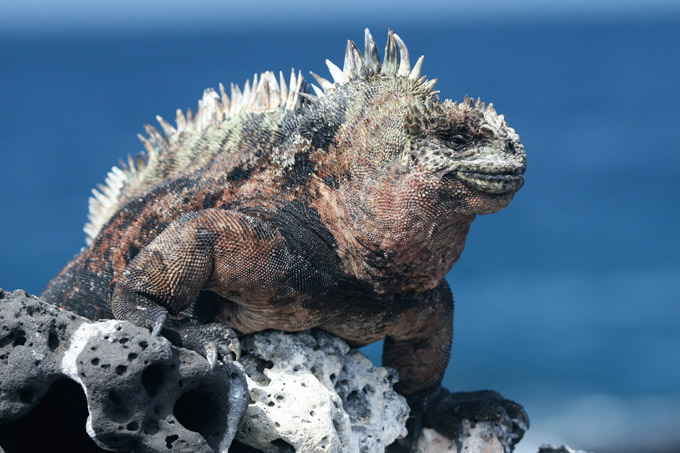
Marine Iguana, Santiago Island

Land Iguana Amongst Sea Purslane, South Plaza Island

Magnificient Frigate Bird

Sally Lightfoot Crab, South Plaza Island

Galapagos Hawk, Espanola Island
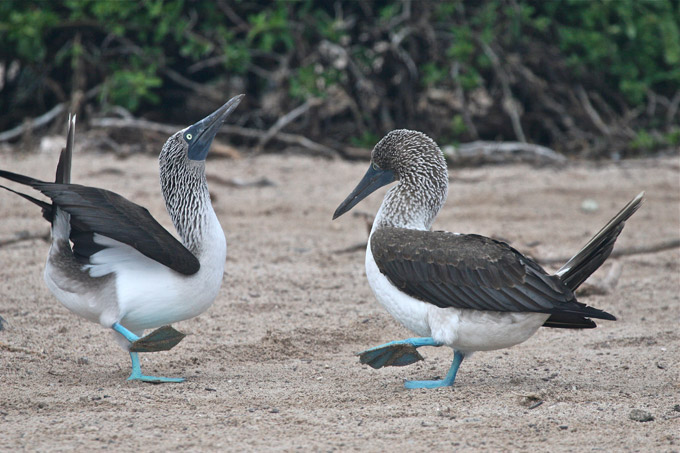
Blue Footed Booby Courtship

Blue Footed Booby

Hood Mockingbird, Espanola Island
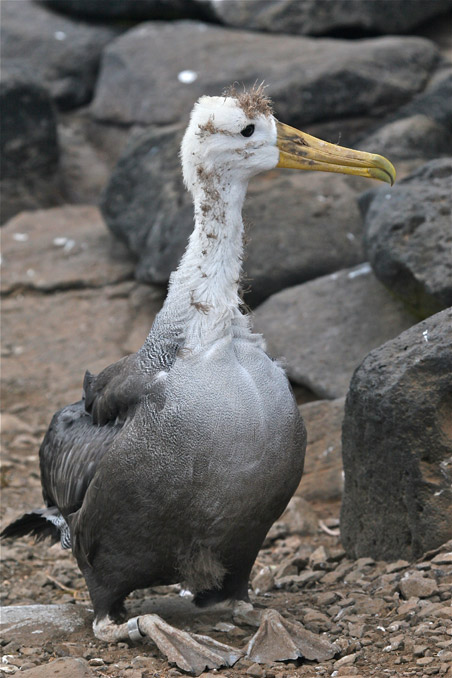
Fledgeling Waved Albatros, Espanola Island

Red- Billed Tropic Bird, South Plaza Island

Greater Flamingo, Floreana Island
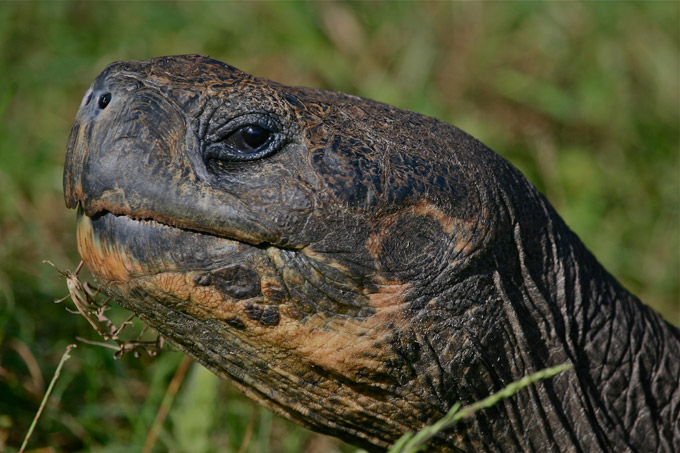
Giant Tortoise, Santa Cruz Island

Giant Tortoise To Scale
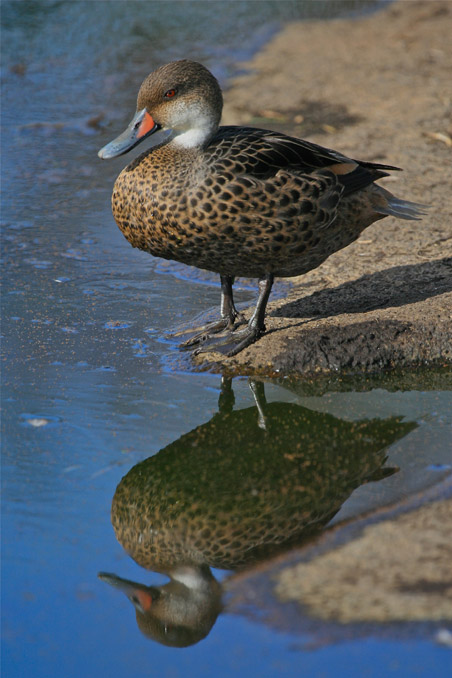
Galapagos Pintailed Duck, Santa Cruz Island

Vermilion Flycatcher, Santa Cruz Island
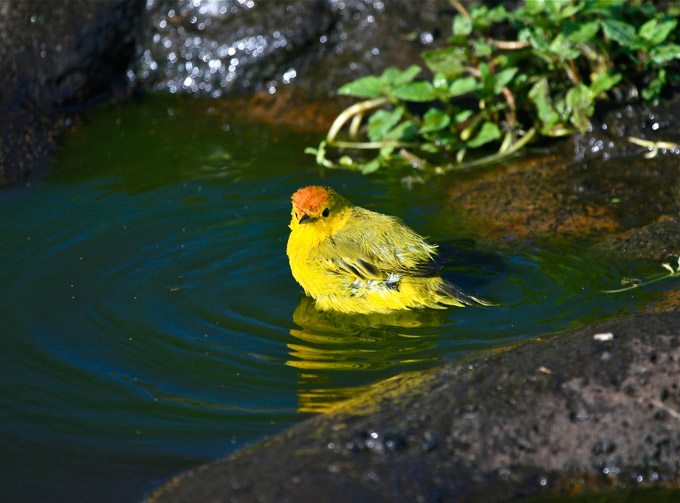
Yellow Warbler, Santa Cruz Island

Opuntia Cactus, Santa Fe Island

Short Eared Owl With Wedge Rumped Petrel, Genovesa Island

Red Footed Booby

Galapagos/wedge Rumped Storm Petrel Off Espanola Island

Brown Pelican, Santa Fe Island

Yellow Crowned Night Heron, Genovesa Island
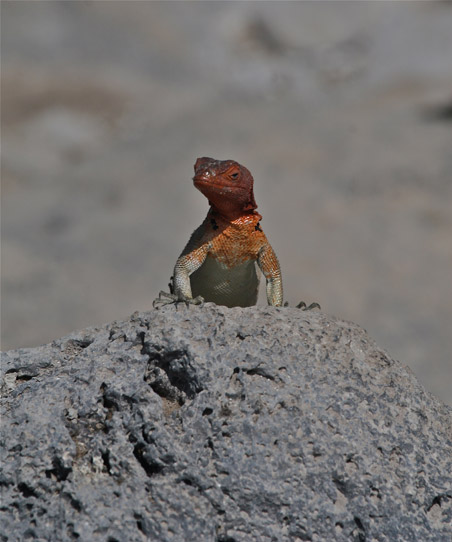
Espanola Lava Lizard, Espanola Island

Cactus Finch, Santa Fe Island

Nazca Booby Courtship, Espanola Island
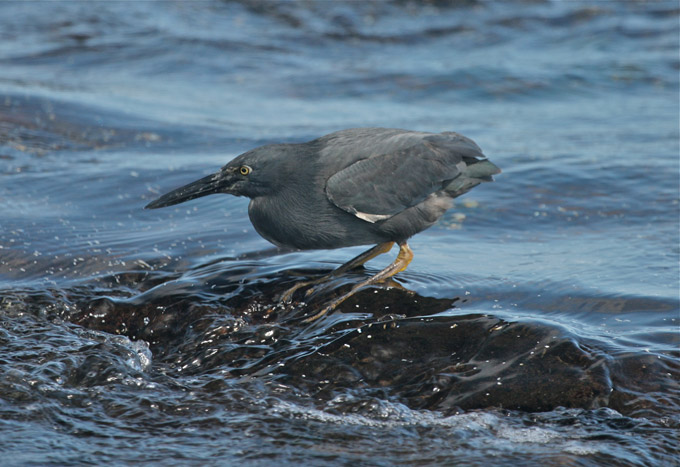
Lava Heron, Santiago Island
The history of these 4 islands reveals that Galapagos has undergone the most violent transformation. Indeed when Darwin visited Galapagos in 1835, even he did not find a paradise as well over 100,000 giant tortoises had been slaughtered for passing ships replenishment. 10,000 remained in 1974. The Espinola species of tortoise was decimated to an eventual low of just 15. Indeed Darwin recorded in his diary of October 8th, 1835, “While staying in this upper region (James Island/Santiago Island,) we lived entirely upon tortoise-meat: the breast-plate roasted (as the Gauchos do carne con cuero,) with the flesh on it, it is very good; and the young tortoises make excellent soup; but otherwise the meat to my taste is indifferent.” Galapagos was also the centre for British and American whaling fleets decimating sperm whales for their blubber to illuminate the streets of the developing world. As recently as 2006, 18,000 pigs were eradicated from Pinta Island, 90,000 goats and donkeys from Santiago Island and 63,000 goats from Isabela Island. In 2006 alone some eight million infected items were estimated to have been found in cargo and luggage by the Galapagos quarantine system. Asian trawlers have quotas for inter alia, sea cucumbers even in a World Heritage site. Were it not for the efforts of the Charles Darwin Research Station, CDRS, it is quite safe to say that Galapagos would be of historical biological evolutionary value only. The CDRS is inspiring to visit. Consider the increase from 15 to 1500 giant tortoises, the success CDRS has achieved breeding and repopulating Espinola tortoises. Without judicious management, there would be no Galapagos Islands in existence today. However the CDRS has no bearing on the changing climatic patterns with the El Nino rain pattern in the Southern Oscillation which impacts on Galapagos marine life negatively.
Nevertheless there appears to be no end to the Galapagos Islands viability as an eco-tourist destination at present. Less than 4000 visitors visited in 1970, 40,000 in 1990 and 140, 000 in 2006. How do you stop a run away eco-train?
